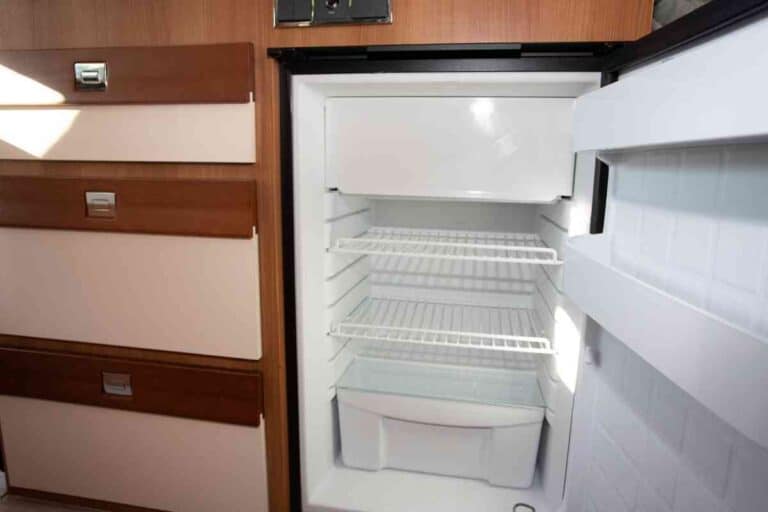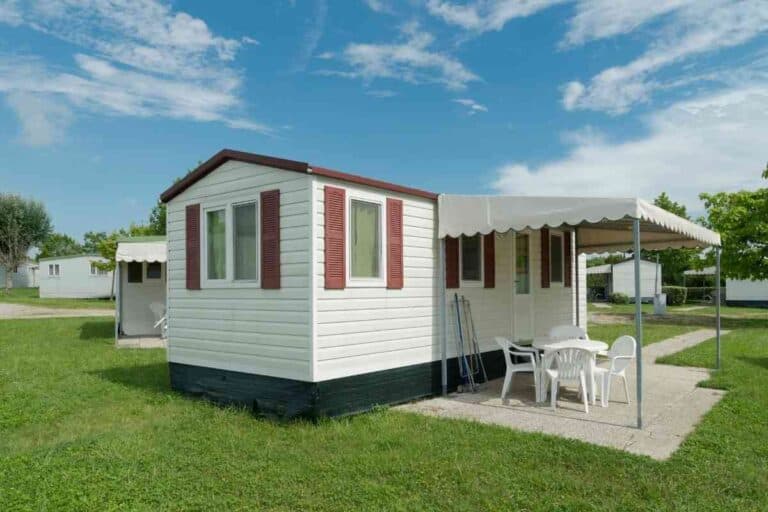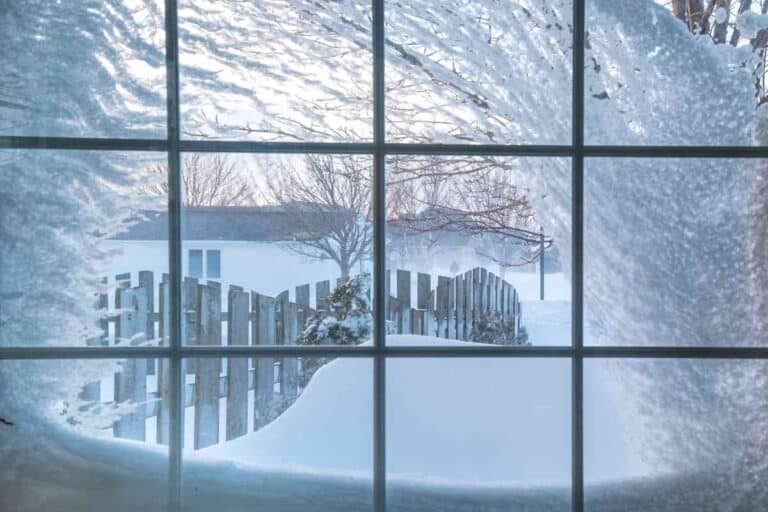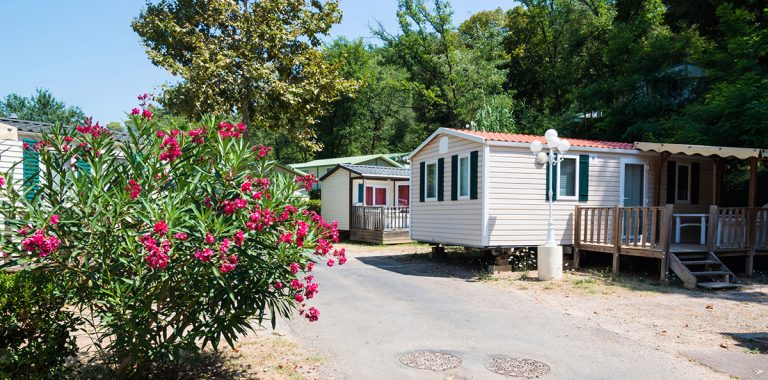Do Yurts Get Moldy? [3 Life-Saving Tips!]
Yurts can be used all year whether you live in Mongolia or Florida. However, those who live in cold or wet climates may face a serious issue: moisture. Perhaps the air inside is damp, the roof is dripping wet, or the windows are fogged up. Mold or mildew could also be a problem.

Do Yurts Get Moldy?
Without proper maintenance, yurts will be prone to growing mold and mildew. Mold and mildew can build over time as a result of excessive moisture and insufficient air circulation. Breathing, hanging damp clothes, cooking, and even bathing all cause humidity in yurts.
One way to prevent your yurt from becoming moist is by insulating your walls with natural or foam insulation before winter arrives. After speaking with various experts, we have put together this guide to help you understand why yurts get moldy and how to keep prevent mold from forming in these dwellings.
Living in a Yurt
If you have adequate air movement and ventilation, you shouldn’t have any mold problems with yurts or tents.
You will; however, need to clean the exterior on a regular basis to remove dirt and debris. The concept of full-time residency in a yurt has always appealed to many primarily because they are wonderful rural areas to live, they are environmentally friendly, and they are attractive. However, if there is plenty of rain in the neck of the woods, it may become rather wet inside at certain times of the year.
Nonetheless, there are several things you can do to keep your home dry and warm.
You must check the following areas on a regular basis for mold, wet spots, and water droplets:
- Inside walls
- Cupboards
- Areas with a lack of ventilation
- Interior ceilings
- Windows
Why Does Mold Build in Yurts?
Yurts have circular roofs supported by wooden rafters and are built of wooden lattice walls.
To keep the elements from seeping in when it rains, you should keep the yurt covered with a sturdy, waterproof fabric cover made of canvas or synthetic waterproof materials.
Cotton canvas is a terrific and long-lasting material, but the way it swells after absorbing water makes it waterproof. This can cause the interior of your walls and ceiling to become damp during heavy rains, making your yurt seem like a sauna in the summer and cold and miserable in the winter.
However, yurts made of other fabrics can become damp on the inside, and some of the less breathable materials are less effective at allowing humid air to escape. This may cause mold to grow inside your yurt, which is harmful to your health and reduces the yurt’s longevity.
So, what can you do to reduce interior humidity during rainy weather?

How To Keep Your Yurt From Getting Too Wet
To keep mold and mildew at bay, give your yurt some tender loving care. Treat any bare wood, especially the lattice, with boiled linseed oil before making the yurt stand upright.
Linseed oil adds a wonderful gloss to it, increases its resistance, and protects it from moisture. Here are a few other ways to prevent mold in yurts:
Ventilation
To keep your yurt dry, the most important thing you can do is ventilate it. The health of the occupants of the yurt, and of course, the yurt itself, depends on venting it properly.
Everyday activities, such as showering, cooking, etc. may add moisture to the air within a yurt. During heavy rains, this causes humidity, which can make the walls seem damp.
Nevertheless, with proper ventilation, the humidity in your home will be removed before it has a chance to build up. Open the dome window at the top of your yurt to let wet air out, and open windows or use a fan inside where you spend the majority of your time.
If you have a habit of forgetting to open the dome, you can set up an automated system to do so when the humidity rises too high.
An open dome will help to keep your yurt dry by minimizing humidity, but for effective ventilation, you’ll need to open several windows or construct an air vent.
Dehumidifier
A dehumidifier is another option. This is especially useful if your yurt gets moist inside after heavy rain, but it may be used at any time of year.
Dehumidifiers prevent damage on the surface of the yurt, the formation of mildew and mold, and eliminate moisture from the air.
If you find too much moistness in your yurt (damp furniture, water on the flooring, or condensation on windows), make sure to ventilate it more until it clears up. A dehumidifier can be used to eliminate or prevent excess moisture in a yurt, but make sure it is also vented out through an open window or door.
Hot air rises to the top of your yurt, carrying more water vapor with it.
This humid air will be expelled when you open the dome at the top of your yurt, and it can make a great difference in how moist your walls and furniture are. To avoid wasting electricity, remember to close your dome and windows again.
Insulation
Your yurt may be kept warm and dry with the help of insulation. Insulation in your yurt is beneficial because it prevents heat from escaping your home, allowing you to maintain a pleasant temperature inside.
A cozy yurt can be kept warmer and nicer with wood stoves or even a propane heater.
During cold or wet days, an insulated wall will also prevent moisture on the inside of your yurt. It’s also critical to ensure that your roof is properly insulated.
Adding an extra layer of insulation will maintain and enhance the quality of the interior ceilings and walls by keeping them warm during the winter.
Some natural materials perform better than others in terms of insulation, with wool being one of the best. Many individuals; however, prefer foam to wool for insulation since it is more efficient. Cotton is also popular, but it is susceptible to mold.
Installing appropriate floor insulation is a smart way to keep the floor of your yurt dry and warm during the winter months. This will keep your home warmer and protect it from ground-level humidity.
A wood pier-style base is a practical and economical solution to keep your yurt dry and warm. This will protect the yurt from rain and humidity damage, as well as reduce the likelihood of mice infestations.
Different types of insulation become even more critical if the yurt does not have a heating system. Insulation will not only keep your yurt at a comfortable temperature, but it may also save you money on heating expenditures because less heat will escape into the environment.
What Is the Best Way to Prevent Mold in a Yurt?
Mold can be a serious moisture problem in a yurt. Mold spores may be extremely dangerous to humans and animals; therefore, a high level of humidity in your house is a serious health hazard.
Mold spores flourish in damp conditions, which is why reducing excess humidity levels is necessary to avoid the issue. Ideally, you should try to maintain between 30% and 50% humidity levels in your yurt to keep mold at bay.
Aside from insulation, heat, and sufficient ventilation, you should also consider including reflective foil in your wall and roof insulation, which acts as a vapor barrier and reflects heat back into the interior area.
If your yurt is made of organic materials, such as a cotton canvas, this is very important.
If you discover mold or mildew in your yurt, act quickly to eliminate it before it spreads or causes serious harm. Wear a mask while clearing out the mold to avoid respiratory problems, and clean moldy clothes, furniture, and other items outside to avoid spreading mold spores throughout your home.
Moreover, since bleach is the most efficient approach to destroy mold, clean up the moisture and mold with a diluted bleach solution.
After that, rinse with distilled water. You should also make sure there’s enough air by opening the dome and windows as much as possible during the daytime hours if the weather permits.
Finally, any mildew or mold that has begun to grow should be removed before it spreads.
FAQs
What Is the life expectancy of yurts?
A basic yurt will stay roughly from 8 to 15 years on average. The yurt’s wooden frame can endure considerably longer than 15 years, but the canvas covering is the weak point.
Its lifetime is determined by the quantity of solar exposure, humidity, and owner upkeep.
Can you leave a yurt up all year?
A yurt can be left up all year round since it can remain inhabited throughout the year. The yurt is particularly toasty in the winter with a log burning or a heater. A felted yurt is a wonderful place to live.
Do yurts smell?
Yurts may have a natural aroma of camel leather to help ward off mosquitoes in the desert. While the fragrance may take some getting used to, your sleep will be free of those pesky little creatures, which is a big plus in our book.
How do you protect a yurt?
The steps and ideas below will show how you can secure your yurt using typical home security devices and other methods that you may find useful.
1. Set up a complete security system
There are many benefits to installing a comprehensive security system in your yurt. Even if you aren’t tech-savvy, adopting even a basic security system can mean the difference between preventing and experiencing a data attack.
2. Use motion-activated or timed lights
If you don’t want or need a comprehensive security system, placing timed or motion-sensor lights around the perimeter of your yurt is one of the most effective security measures you can take.
In addition, timed lighting is a great method to keep your yurt safe when you’re on vacation or just use it part-time. Motion-sensor and timed lights are a wonderful technique to deter burglars or pests from accessing your yurt while keeping it secure for seasonal yurt owners.
3. Install a surveillance system outside
Modern smart home security camera systems allow you to record what’s going on around your yurt while also allowing you to set up motion-activated notifications that can be sent to your phone or another device.
Intruders seeking to gain entrance to a property are deterred by displaying surveillance cameras around the yurt.
4. Keep the outside of your yurt clean and tidy
It may sound strange, but maintaining your yurt’s exterior and keeping it as neat and clean as possible is another approach to keeping it secure. Begin by inspecting your landscape and removing any potential hiding places.
Large plants, grass patches, and trees should all be trimmed around your home. For increased protection, you can also install tiny motion-sensor lights and cameras further away from your yurt.






